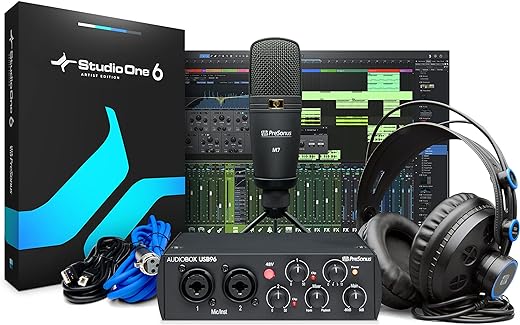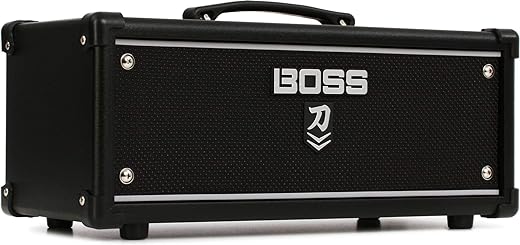How to Set Up a PA System for Optimal Sound Quality
Are you tired of struggling with poor sound quality during events or performances? Do you want to ensure that your voice or music is heard loud and clear? Look no further, because in this blog post, we will guide you on how to set up a PA system for optimal sound quality. Whether you’re a musician, public speaker, or event organizer, we understand the frustration that comes with subpar sound. That’s why we’re here to help you achieve the best audio experience possible. In this post, we will walk you through the essential steps to set up a PA system that will make your audience sit up and take notice. Get ready to take your sound quality to the next level!
Understanding PA Systems
PA systems, or Public Address systems, play a critical role in delivering clear and intelligible audio in various settings. Whether you’re attending a conference, a concert, or a public event, understanding the basics of PA systems can enhance your experience. In this article, we will delve into the essential components and functions of PA systems, providing you with a comprehensive understanding of how they work.
What is a PA System?
A PA system is a collection of audio equipment used to amplify sound and distribute it to a large audience. It consists of several components that work together to ensure optimal sound quality and coverage. These systems are commonly found in venues such as auditoriums, stadiums, churches, and even smaller spaces like conference rooms or retail stores.
Components of a PA System
To comprehend how a PA system functions, it is important to familiarize yourself with its key components. Let’s take a closer look at each one:
1. Microphones
Microphones are the starting point of any PA system. They convert sound waves into electrical signals, which are then transmitted through the system. Different types of microphones, such as dynamic, condenser, or wireless, offer varying levels of sensitivity and are suitable for different applications.
2. Mixers
Mixers are the control centers of PA systems. They allow you to adjust the volume, tone, and balance of multiple audio sources. By connecting microphones, instruments, and playback devices to the mixer, you can blend and fine-tune the audio before it is amplified and distributed.
3. Amplifiers
Amplifiers, as the name suggests, amplify the audio signals received from the mixer. They increase the power of the signals to drive speakers and ensure that the sound reaches the audience with clarity and sufficient volume.
4. Speakers
Speakers are responsible for reproducing the amplified audio and delivering it to the audience. They come in various sizes and configurations, including floor-standing speakers, line arrays, and ceiling-mounted speakers. The choice of speakers depends on factors such as the size of the venue, desired coverage, and specific audio requirements.
5. Signal Processors
Signal processors, often integrated into mixers or separate units, enhance and manipulate the audio signals. They can provide effects like equalization (EQ), compression, reverb, and delay, allowing you to shape the sound to suit the environment and achieve optimal clarity.
6. Cables and Connectors
Cables and connectors form the vital link between the various components of a PA system. High-quality cables, such as XLR or Speakon cables, ensure minimal signal loss and interference. Properly connecting and organizing the cables is crucial for maintaining a clean and reliable audio signal flow.
Benefits of PA Systems
Now that we have explored the key components of a PA system, let’s highlight some benefits of using these systems:
- Improved sound amplification and clarity, ensuring that everyone in the audience can hear and understand the message or music being conveyed.
- Enhanced control over audio levels, allowing you to adjust the sound to accommodate different venues and audience sizes.
- Flexibility in integrating various audio sources, such as microphones, instruments, and playback devices, to create a seamless audio experience.
- Customizable sound processing options, enabling you to optimize the audio quality for different types of events or performances.
- Scalability, as PA systems can be designed to accommodate both small and large venues, providing consistent sound coverage throughout.
By comprehending the fundamentals of PA systems and their benefits, you can make informed decisions when selecting and utilizing these systems for your audio needs.
Remember, each component plays a significant role in delivering exceptional sound quality, so it’s important to choose reliable brands and products that suit your specific requirements.
Choosing the Right Equipment
When it comes to setting up a professional sound system, selecting the right equipment is crucial for achieving the best sound quality. In this guide, we will walk you through the process of choosing the right equipment for your PA system setup. We will cover key factors to consider, including power requirements, speaker types, mixers, and microphones. By the end of this article, you will have a clear understanding of what to look for when assembling your PA system.
Power Requirements
One of the first things to consider when selecting equipment for your PA system is the power requirements. Different venues and events may have varying power capabilities, so it is important to choose equipment that can be adequately powered. Here are some key points to keep in mind:
- Determine the power capacity of the venue or event space.
- Calculate the total power consumption of all your equipment (amplifiers, speakers, mixers, etc.).
- Choose equipment that can be powered within the available capacity.
Example: If you are setting up a PA system for a small conference room with limited power capacity, opting for compact, low-power speakers like the Bose L1 Compact System can be a suitable choice.
Speaker Types
The type of speakers you choose will significantly impact the sound quality and coverage of your PA system. There are various speaker types available, each with its own characteristics. Here are a few common types:
- Passive Speakers: These speakers require an external power amplifier to function. They offer versatility and are often more affordable compared to active speakers.
- Active Speakers: Active speakers have built-in amplifiers, eliminating the need for external amplification. They are easy to set up and are commonly used in portable PA systems.
Example: For a live band performance, considering a pair of active speakers like the JBL EON615 can provide ample power and excellent sound quality.
Mixers
A mixer is a crucial component of any PA system, as it allows you to control and balance the audio signals from various sources. When selecting a mixer, consider the following:
- Channel count: Determine the number of channels you will need to accommodate all your audio sources (microphones, instruments, playback devices, etc.).
- Built-in effects: Some mixers offer built-in effects like reverb, delay, and compression, which can enhance your sound.
- Connectivity options: Consider the inputs and outputs available on the mixer to ensure compatibility with your audio sources and other equipment.
Example: The Behringer X32 Digital Mixer offers a wide range of features, including 32 channels, built-in effects, and extensive connectivity options, making it suitable for larger events and professional setups.
Microphones
Microphones play a crucial role in capturing clear and accurate audio. Choosing the right microphone for your application is essential. Here are a few factors to consider:
- Microphone type: Dynamic microphones are durable and suitable for live performances, while condenser microphones offer greater sensitivity and are commonly used in studio environments.
- Polar patterns: Different microphones have varying polar patterns (e.g., cardioid, omnidirectional, etc.), which determine their directionality and suitability for different applications.
- Wireless options: For added flexibility and mobility, consider wireless microphone systems, especially for performers who need to move around the stage.
Example: The Shure SM58 is a legendary dynamic microphone known for its durability and excellent sound quality. It is a popular choice for live vocals and is used by professionals worldwide.
In conclusion, selecting the right equipment for your PA system setup is crucial for achieving the best sound quality. By considering factors such as power requirements, speaker types, mixers, and microphones, you can ensure a well-balanced and professional sound system. Remember to assess your specific needs and preferences before making a final decision.
Setting Up the PA System
Setting up a PA (Public Address) system can be a daunting task, but with the right knowledge and guidance, you can achieve the best sound quality for your venue or event. In this blog section, we will provide step-by-step instructions on how to set up your PA system for optimal sound quality. We will cover important aspects such as speaker placement, microphone positioning, cable management, and other considerations that will help enhance your audio performance. So let’s dive in!
1. Speaker Placement
The placement of your speakers plays a crucial role in delivering clear and balanced sound throughout the venue. Here are some key points to consider:
- Positioning: Place your speakers at an equal distance from the center of the stage or performance area, ensuring they are elevated to avoid obstruction and maximize sound projection.
- Angle and Tilt: Angle your speakers downwards towards the audience to prevent excessive sound reflection off the ceiling. Tilt them slightly inward to create a wider dispersion of sound.
- Distance: Position your speakers at an optimal distance from the audience. A good rule of thumb is to place them approximately one meter above the heads of the front row.
2. Microphone Positioning
Proper microphone positioning is essential for capturing clear vocals and minimizing feedback. Follow these guidelines for optimal results:
- Distance: Maintain a consistent distance between the microphone and the performer’s mouth. Around 6 to 8 inches is usually ideal, but this may vary depending on the type of microphone being used.
- Angle: Position the microphone slightly off-axis from the performer’s mouth to reduce plosive sounds and improve overall clarity.
- Feedback Prevention: Avoid placing the microphone directly in front of or near the speakers to minimize the risk of feedback. Consider using directional microphones or employing sound-absorbing materials in the vicinity of the microphone.
3. Cable Management
Effective cable management not only ensures a clean setup but also reduces the chances of accidental disconnections or tripping hazards. Here are some tips to keep your cables organized:
- Labeling: Use color-coded labels or tags to identify different types of cables (e.g., XLR, power, speaker) for easy identification and troubleshooting.
- Routing: Route your cables away from high-traffic areas and secure them using cable ties or cable covers to prevent tripping hazards.
- Length: Use cables of appropriate length to avoid excessive cable slack, which can cause signal degradation or interference. Consider investing in high-quality cables from reputable brands like Mogami or Neutrik for optimal performance.
4. Other Considerations
In addition to the aforementioned aspects, here are some other important considerations to enhance your audio performance:
- Acoustic Treatment: Assess the venue’s acoustics and consider using acoustic panels or diffusers to minimize unwanted reflections and reverberation, thereby improving overall sound quality.
- Power Management: Ensure that your power supply can handle the requirements of your PA system. Use surge protectors or power conditioners to protect your equipment from power surges or fluctuations.
- Equipment Selection: Choose high-quality PA system components from trusted brands such as Bose, JBL, or Yamaha, as they offer superior sound reproduction and reliability.
Remember, each venue may have its unique challenges, so it is important to experiment and fine-tune your setup based on the specific characteristics of your space and the requirements of your event.
By following these step-by-step instructions, you can set up your PA system with confidence, knowing that you have taken the necessary steps to achieve optimal sound quality. Happy sound engineering!
Note: Please refer to the user manuals or manufacturer’s guidelines specific to the PA system components you are using for detailed instructions on setup and operation.
Final Thoughts: Achieving Perfect Sound Quality for Your PA System
In conclusion, by following the guidelines outlined in this blog post, you can confidently set up a PA system for optimal sound quality. Understanding the fundamentals, selecting suitable equipment, correctly configuring the system, and implementing sound quality optimization techniques are all key to achieving exceptional audio performance. By applying these principles, you can elevate your audio experience and ensure a professional and enjoyable sound output.







I would love to see some examples of real-world applications of PA systems. Any suggestions?
Certainly! PA systems are commonly used in live concerts, conferences, public speaking events, and even in houses of worship. Do any of these interest you?
Thank you! I’m glad the article was able to provide you with useful information.
I’ve heard some debate about whether analog or digital mixers are better for PA systems. What are your thoughts?
That’s an interesting topic! Both analog and digital mixers have their pros and cons, and it ultimately depends on personal preference and specific requirements. What are your main concerns or considerations?
What would you recommend as the best PA system for outdoor events?
There are several great options for outdoor events. Can you provide more details about the size of the event and specific requirements?
I’ve been struggling with feedback issues in my PA system. Any tips on how to eliminate or reduce feedback?
Feedback can be a common challenge. Some tips to reduce feedback include adjusting speaker placement, using feedback eliminators or notch filters, and being mindful of microphone positioning and gain levels. Let me know if you need further assistance!
I’ve been using XYZ brand speakers for my PA system and the sound quality is amazing. Highly recommended!
That’s great to hear! XYZ brand does indeed have some excellent speakers. Thanks for sharing your positive experience.
I found the section on understanding PA systems very helpful. It clarified some concepts that I wasn’t familiar with.
I’ve found that using EQ and compression can greatly improve the sound quality of a PA system. Do you have any other tips to share?
Absolutely! EQ and compression are important tools for optimizing sound quality. Other tips include proper placement of speakers, using high-quality cables, and adjusting levels and gain staging. Let me know if you’d like more specific suggestions!
What other articles or resources would you recommend for someone looking to dive deeper into PA systems?
I would suggest checking out ‘The Ultimate Guide to PA Systems’ by John Smith. It covers a wide range of topics and provides in-depth information.